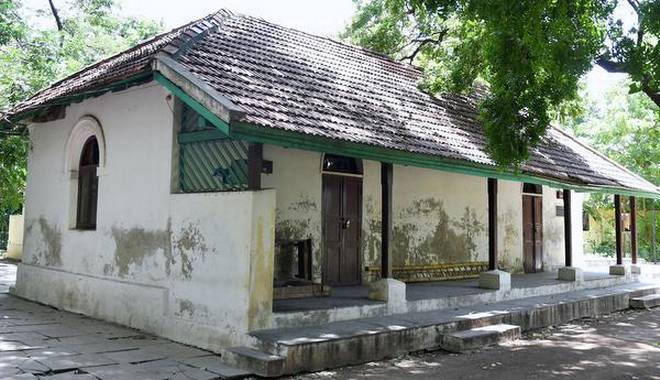Monthly Archives: October 2018
15
14
13
12
11
Monegar Choultry: House of hope
The trees in the compound are striking. They have unmistakeably been standing there for decades. The work that’s been going inside the old building, set at the far end, pre-dates them — hand-written wall announcements on the sides make it clear. We are standing in front of Monegar Choultry that has sheltered and fed people since 1782. The choultry ran the first organised charity in Madras.
Historian S Muthiah, in his article in MetroPlus dated November 19, 2001, takes us to its origins . “When Madras was stricken by one of its worst-ever famines in 1781, the city’s first formal charity was set up by the Government and St Mary’s Church,” he writes. “A Famine Relief Committee was established in 1782 and the Committee rented a house for poor feeding just beyond the north wall of George Town — in present day Royapuram that was all fields, vegetable gardens and fruit groves then.”
He writes: “The house continued as a refuge for the poor and the sick even after conditions improved in 1784. It is around that time, it appears to have got its name. Monegar Choultry, perhaps by then being locally administered by the village headman (manugakkaran).” Nivedita Louis, city historian, tells us that in 1782, a village headman established a gruel centre in his garden in Royapuram. Soon after the Mysore War (1799), the centre became a choultry for the sick and those in need. In 1807, the Government and the Nawab of Arcot made substantial donations as more people began to seek solace under its roof. A hospital was constructed within the choultry in 1799 by John Underwood, an assistant surgeon. In 1801, the hospital was combined with the ‘Native Hospital and Poor Fund’ in the choultry. During the visit of the Raja of Venkatagiri, another choultry was built next to Monegar Choultry for feeding a hundred people and giving alms to another hundred every day. The charity thus started became permanent when the Raja invested ₹1 lakh in Government Securities on June 28, 1870, for its upkeep.
The Native Hospital was taken over by the Government in 1910 and was renamed Royapuram Hospital, later Stanley, while the choultry was shifted to the premises of the nearby Raja of Venkatagiri Choultry. For a long time, Stanley hospital was referred to as the ‘Kanjithotti hospital.’
Here’s a mystery: To the left of the choultry is a gate guarded by a carved stone beam standing on two stone pillars. “This was once the choultry superintendent’s house,” says Nivedita. It will be interesting to find out what the two winged creatures supporting the beam are.
source: http://www.thehindu.com / The Hindu / Home> News> Cities> Chennai / by Geeta Padmanabhan / October 08th, 2018
The humble naturalist
A Natural History of the Indian Sub-continent by Valmik Thapar, Walking the Himalayas by Levison Wood and Dervla Murphy’s books on touristy and travelling.
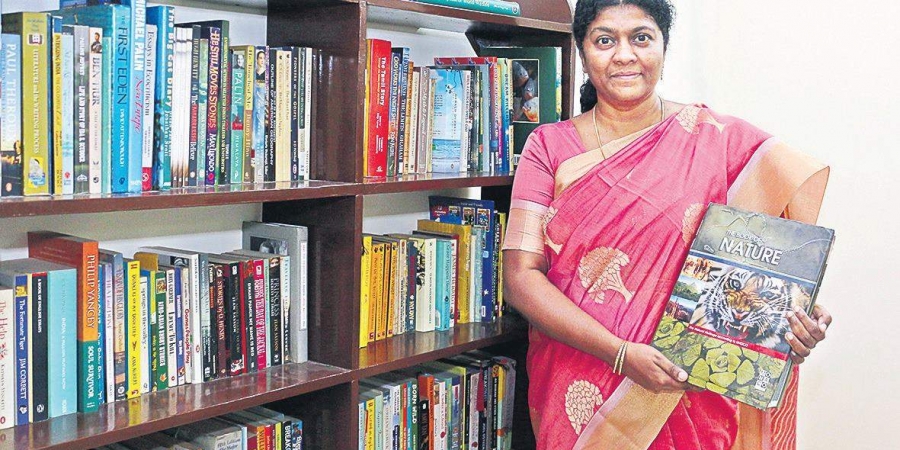
Chennai :
Vaishali Vijaykumar It’s 9.30 am on a Monday. The college bell rings. We wait for Lilian Jasper, principal of Women’s Christian College (WCC), as she wraps up her English lecture. Soon, Lilian, draped in a pink silk sari with golden tree motifs, greets us with a warm smile. As we take a seat in her room, we notice a row of souvenirs and a stack of nature-themed books.
Classics like Land of the Tiger: A Natural History of the Indian Sub-continent by Valmik Thapar, Walking the Himalayas by Levison Wood and Dervla Murphy’s books on touristy and travelling. “I don’t believe in sight-seeing. I need to get on the field and experience the adrenaline rush. Traversing through rocky terrains, adventurous animal-spotting safaris and living with nomadic tribes give me the satisfaction of a purposeful trip,” shares Lilian, who has been a part of the institution since 1993. Lilian’s home is nestled in the lush green college campus that has 110 varieties of trees and several species of birds making frequent visits.
The biodiversity extends into her home as well, where she has set up her garden, which is dotted with orchids, water lilies and potted plants picked up during her various travels. Lilian’s in-depth interest in ecology combined with a flair for writing led her to start eco-literature in WCC in 2009. “This is a paper for English literature students. I’ve made it application-oriented with field trips and study tours to keep the students engaged. Kids these days might not be excited about rural trips or bird-watching sessions.
But, these are life-changing experiences. The itinerary usually includes a visit to the wildlife park, mountainous terrain or a tribal settlement. They’re expected to document the people they meet and the species they spot, so there’s no chance to bluff in their assignments. I’m thankful to Nirmal Selvamony, a pioneer in ecocriticism, who inspired me to take up this subject while I was a student,” she shares. An avid traveller, Lilian has taken her students to Parambikulam National Park near Top Slip, Kolli Hills on the western ghats, Kaziranga National Park in Assam, Rameshwaram’s fishing hamlets, Vedanthangal Bird Sanctuary and Attapadi village in Kerala.
Before visiting, she reads about the place, its forest cover, unseen localities and tribal communities to make the best out of these trips. “Three years back we went to Dhanushkodi. We wanted to interact with the indigenous group to get a realistic perspective of their livelihood. A fisherman suggested we taste a fish fry made in their style. Freshly caught fish was flung into the fire and roasted with no spices. It was delicious. These instances teach us to go back to the basics.
The food was simple and it also nourishes your body,” she shares. “Apart from college trips, we have a team of five faculty members-cum-friends. We plan all-women trips and travel frequently. One such trip was to the Jim Corbett National Park. That was the first time I spotted the majestic creature — a tiger. It was close to a water hole, and suddenly jumped and stood in front of our jeep.
These experiences prepare you for long hours of trekking and untimely meals,” shares Lilian, who has co-authored the travelogue, Kenyan Odyssey. The book has vivid images clicked by Lilian about the species that lived in a forest in Tanzania, during her eight-day journey. “I’m a mountain person. The hills are a rich source of medicinal plants, sacred groves and endangered animals.
We often take faculty members from Zoology and Botany departments to help us identify the flora and fauna. These trips make you humble and expose you to the side of reality that you wouldn’t see in cities,” she says. Leh Ladakh, Netherlands, Ranthambore and Great Rann of Kutch are a part of her bucket list. She hopes to make eco-literature a compulsory subject for all students to inculcate the importance of ecosystem.
Memories
During our journey to Rameshwaram, we stumbled upon a group of women. They were sari-clad deep sea divers. They earn their livelihood by collecting seaweeds that grow along the coastline. Comfort zone was never a concern to them and they made no fuss about it. These were also the women who headed the panchayat and played a prominent role in the village administration.
source: http://www.newindianexpress.com / The New Indian Express / Home> Cities> Chennai / by Express News Service / October 09th, 2018
Historian shares East India Company’s jumbo secrets
The East India Company was a huge importer of elephants and ships would use elaborate pulley systems to transport these animals.
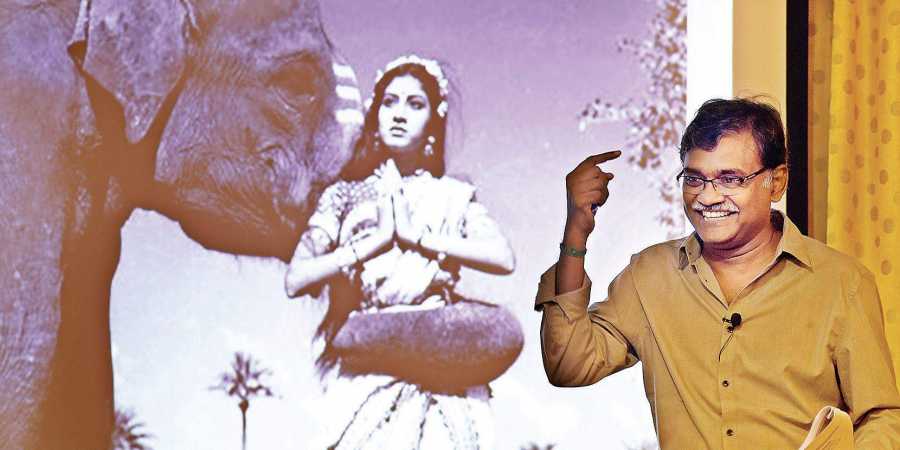
Chennai :
It seemed appropriate that there were Ganesha figurines and statues on shelves and tables at Airlift House in T Nagar, as the talk scheduled for the rainy evening was ‘The Giants of George Town’ by historian and author Venkatesh Ramakrishnan.
He explained that in Madras’ 500-year history that included the Portuguese settlement in Santhome, there was a steady flow of migrants and the elephants were no different. The city was a hub for the 5,000-kg animal with a constant inflow of herd from Coorg and Kongunaadu for the first 300 years.
The East India Company was a huge importer of elephants and ships would use elaborate pulley systems to transport these animals. “As Madras did not have a port for the first 150 years, boats would take the cargo and passengers to the ship from the shore. The elephants would be pushed off the boat and made to swim to the coast,” said Ramakrishnan.
Once a port was established, Madras began exporting elephants to various places, primarily the Andaman Islands. Fort St George has many references to the animals, with a gate in the L-shaped wall built to separate Black Town on Walltax Road called the Elephant Gate. The street opposite is called Elephants Gate Road. Following the British’s love for hunting, Madras was the first city to ban the hunting of elephants in the 18th Century.
The East India Company records show that elephants needed 600 pounds of grass daily. With the elephant, caretaker and grass-cutter costing `48 in total, double of what they cost in Bengal at the time. Ramakrishnan said an elephant in captivity was a metaphor for the control over India for the British, which explained the elephant motifs in records related to India from the EIC.
“Thirumullaivoyal has the first record of an elephant in Madras. A king was travelling on his elephant when it scratched its leg and a lingam was found where the blood flowed,” said Ramakrishnan, adding that the Madras Veterinary College is one of the few veterinary colleges in the world that offers a degree in elephant management.
During World War II, train carriages were in great need for the British Empire, who took all unnecessary bogeys and engines for their warranty efforts. This led to elephants leading the entire shunting business in Madras. “You were also permitted to transport your elephant, for a princely sum of `400. Ticket prices then were between `1 and 10, which made this all the more exorbitant,” said Ramakrishnan, adding that this was mostly used by the rulers of princely states.
Elephants have also featured in many Kollywood films. For the 1948 film Chandralekha, produced and directed by SS Vasan at Gemini Studios, two circuses stayed at their studio in Kodambakkam. “It was a common sight then to see elephants being taken for a walk in Kodambakkam. People would come to the studio to see the elephants,” said Ramakrishnan.
Notable facts
The city was a hub for the 5,000-kg animal with a constant inflow of herd from Coorg and Kongunadu for the first 300 years. The East India Company was a huge importer of elephants and ships would use elaborate pulley systems to transport them.
source: http://www.newindianexpress.com / The New Indian Express / Home> Cities> Chennai / by Rochana Mohan / Express News Service / October 08th, 2018
The ability to work wonders
The Swarga Foundation Calendar features some inspiring women from across the country
“People with disabilities face a lot of stigma. This project aims to create an awareness on disabilities”, said Swarnalatha J, managing trustee of Swarga Foundation at the launch of its annual calendar, ‘I’m Special’ at The Residency Towers. The theme for this edition is Women of Substance with 12 women from various fields.
The calendar is the result of eight months of work. “We started in February. We short listed the people and did the photo shoot. The photographs are taken by Anand Daga, a film maker from our city. I am also a model in it”, said Swarnalatha, who has Multiple Sclerosis. After an introduction about the foundation there was a Bhratanatyam performance by Prerana Sahane and a vocal performance by Divya Bijur and Swarnalatha. Santhalinga Marudasala Adikalar, Perur Adheenam Pontiff and Balchand Bothra, Chairman of Mahaveer’s launched the calender.

One of models, Gauri Shekhar Gadgil, is a swimmer and actor from Pune. She has Down Syndrome. A doctor advised her to swim and she went on to win a silver medal at the 2007 Special Olympics held at Shanghai, China. She also won a bronze and two silver medals at The Asia Pacific Swimming Competition organised by The Down’s Syndrome Association in 2012. Gauri has also acted in a Marathi movie, Yellow directed by Mahesh Limaye, for which she received a special mention in the 61st National Film Awards. In 2017 she was awarded with the Role Model National Award for the Empowerment of Persons with Disabilities, issued by the Ministry of Social Justice and Empowerment.
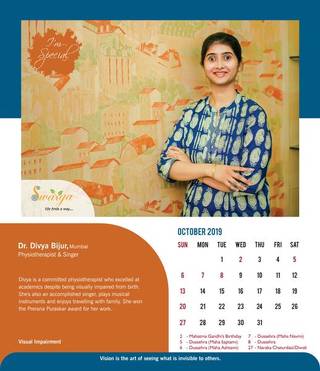
Divya Bijur is a physiotherapist based in Mumbai who is visually challenged “I am blind from my birth. I learnt physiotherapy from the Sikkim Manipal University and started my own Physiotherapy clinic, Vasai eight years ago. My patients were initially sceptical, but things have changed now. I have a lot of patients who believe in me. My life is good,” said Divya.
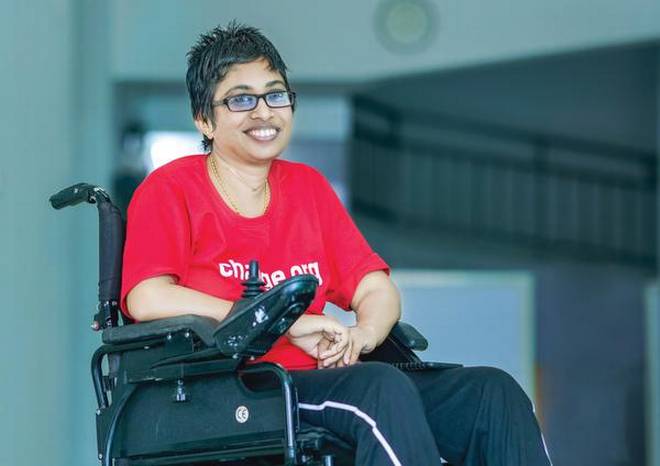
Ashla Rani MP from Trivandrum was 28 when she met with a train accident that left her a quadriplegic. “I was working in the software industry and my life changed in an instant. I couldn’t move my fingers or my legs. I also lost control of my bladder and bowel. I now type with my knuckles. I also joined the NGO Pallium India that provides palliative care. This accident has changed my entire perspective towards life. I am a lot more positive now,” said Ashla.
Madhavi Latha has polio. “I am from a rural village in Telagana. I studied hard and got a job in a bank where I worked for 15 years. I started to ride a scooter and a car at the age of 27. This was very empowering for me. In 2007, my muscles started to weaken and I was diagnosed with Scoliosis. Later, I learnt to swim. In 2011, I won three gold in swimming at the National Paralympic Swimming Companionship held at Kolhapur and started the Paralympic Swimming Association of Tamil Nadu. I started to play wheel chair basketball in 2014 and started the Wheelchair Basketball Federation of India. We have 500 players across the country, says Madhavi who is also the vice-president of an MNC in Chennai.
Preethi Srinivasan was a state level cricketer and swimmer before she met an accident. She took a fall on the beach at Puducherry that left her paralysed. “It took me an year to come in terms with my condition. I understood how society views a person with disability. In 2013, I started Soulfree to support people with spinal injury. We train medical technicians, conduct awareness programmes, and provide financial support to patients who want to start their own business. My goal is to have an inclusive self sustainable village for people with disabilities in our country.” She received the Kalpana Chawla Award for Courage and Daring Enterprise in 2017.
Prerana Sahane from Pune is a hearing impaired Bharatanatyam dancer and artist. Her dance teacher Shumita Mahajan said, “She lost her hearing following a paralysis attack when she was six-months-old. She came to me to learn Bharatanatyam when she was seven. Prerana performs across the country and has received the Role Model Award for the Empowerment of Persons with Disabilities in 2015.”
Calender women
The others featured are Rajalakshmi SJ, Mrunmaiy Abroal, Ketna L Mehta (Paraplegia), Sujatha Burla (Quadriplegia) and Malvika Iyer (Bilateral Amputee)
Info you can use
The calender costs ₹ 300 and is availabel at Jini & Jony, Brookefield Mall and Swarga Foundation, Nanjundapuram Road
Available in desktop and wall hanging options and can be customised with logos
Proceeds will be used to set up a physiotherapy clinic
8870955111 for details
source: http://www.thehindu.com / The Hindu / Home> Life & Style / by Susan Joe Philip / October 02nd, 2018
